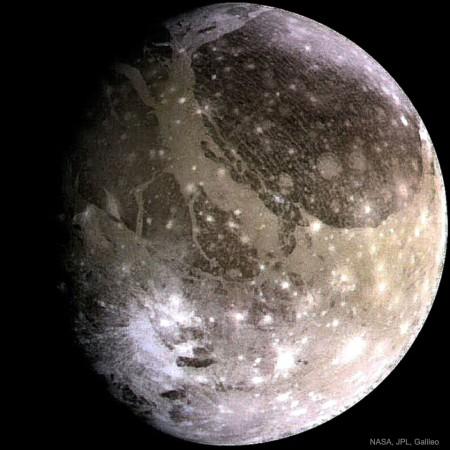
Electromagnetic "chorus" waves are found to be about 1 million times more powerful near the Jupiter's moon Ganymede, and about 100 times more intense near Europa than the average radiation around their planets.
When electromagnetic waves are converted to sound, they can sound like chirping birds in a forest. This is why such waves are also referred to as chorus waves. These are the same waves that cause the auroras over the Earth, but intense, high-energy electrons are known to be quite damaging to spacecraft and satellites. A new study by researchers at the University of Potsdam has set about describing chorus waves around planets within the Solar System.
Chorus waves that surround Ganymede, found that the study is about a million times more intense than the planet of Jupiter itself and it was found to be 100 times stronger near Europa as well. These conclusions were drawn based on data collected by the Galileo spacecraft.
"It's a really surprising and puzzling observation showing that a moon with a magnetic field can create such a tremendous intensification in the power of waves," says the lead author of the study, Professor Yuri Shprits of GFZ/ University of Potsdam.

Chorus waves are radio waves very low frequencies. Unlike the Moon, both Ganymede and Europa orbit inside Jupiter's magnetic field, and scientists believe that this is a key factor in how these waves are powered. Jupiter being the largest planet in the Solar System, has the largest and most powerful magnetic fields, about 20,000 times stronger than Earth's.
Chorus waves have been detected in space around the Earth, but they are nowhere near as strong as the waves at Jupiter, says Professor Richard Horne of British Antarctic Survey, a co-author on the study.
"Even if small portion of these waves escapes the immediate vicinity of Ganymede, they will be capable of accelerating particles to very high energies and ultimately producing very fast electrons inside Jupiter's magnetic field."
Chorus waves are known to create the high-energy killer electrons that damage spacecraft, notes the report, and considering how powerful the electromagnetic field is around Ganymede, scientists are questioning what kind of damage it can do to spacecraft that gets closer to it.














